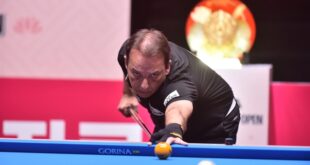Southeast Asian athletes will vie for dominance in more than 30 sports in Phnom Penh from May 5 to 17, in everything from athletics and football to jet ski and obstacle race.
The SEA Games has a flexible program that includes sports in the hosts’ favour and also allows for regional and newer disciplines.
AFP Sport looks at four unusual sports at these Games:
Kun Bokator
Believed to date back more than 1,000 years to the armies of the Khmer empire, which spread across much of Southeast Asia, Kun Bokator is perhaps the most quintessentially Cambodian martial art.
The graceful style, incorporating elbow blows, shin strikes, locks and grapples, makes its SEA Games debut just a year after being inscribed on UNESCO’s list of Intangible Cultural Heritage of Humanity, and so finds itself in rude health only decades after nearly being erased.
It barely survived the Khmer Rouge regime of the 1970s, but Kun Bokator has since won new followers among Cambodians keen to preserve their culture – UNESCO called it “an embodiment of Cambodia’s social, cultural and religious values”.
Cambodia will have an obvious advantage in Kun Bokator, but among foreigners looking to beat their hosts at their own game is Philippine MMA star Mark Striegl.
Teqball
In contrast to the ancient, locally rooted Kun Bokator, Teqball was invented as recently as 2012, in Hungary.
Played on a specially curved table, it is a mash-up of football and table tennis, requiring agility, stamina and acrobatic overhead kicks.
Top international football teams including Spain and Portugal bond over games of Teqball during downtime at training, and legends such as Ronaldinho have become ambassadors for the game.
It will be a demonstration sport at the SEA Games, as it seeks medal recognition at other sports events around the world.
Arnis
The stick-wielding martial art of the Philippines is back again in 2023, having only made appearances in 2005 and 2019, when the country hosted the Games.
In arnis, two players in body armor and helmets try to hit each other with a baton made of ratan.
In the anyo discipline, individual performers don traditional dress for choreographed routines with weapons.
Arnis and Kun Bokator are not the only national martial arts on display this month.
There is Vovinam -– the acrobatic style with roots in Vietnam’s independence struggle -– and Indonesia’s pencak silat.
Chinlone
Myanmar’s chinlone is essentially a footballer’s game of “keepy-uppy”, but played with a woven cane ball by teams with deft touch, balletic grace and physical invention.
Hugely popular in the villages of Myanmar, it is a game of team cooperation. Six players keep the ball off the ground using any part of their body except their hands, with players performing flips as they kick the ball high into the air.
Chinlone’s idiosyncrasies, as well as its focus on form and artistry, meant rules had to be crafted for its introduction to the Games in Naypyidaw in 2013 -– such as the introduction of an opposition, scoring system and defined playing area.
In each match, two teams perform 10-minute sets, which are scored individually. First to win two sets takes the match.
- Reduce Hair Loss with PURA D’OR Gold Label Shampoo
- Castor Oil Has Made a “Huge” Difference With Hair and Brow Growth
- Excessive hair loss in men: Signs of illness that cannot be subjective
- Dịch Vụ SEO Website ở Los Angeles, CA: đưa trang web doanh nghiệp bạn lên top Google
- Nails Salon Sierra Madre
 VnExpress News The News Gateway of Vietnam
VnExpress News The News Gateway of Vietnam





